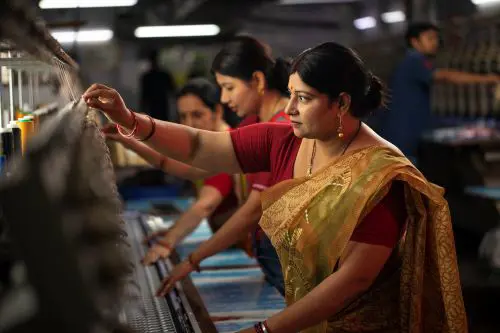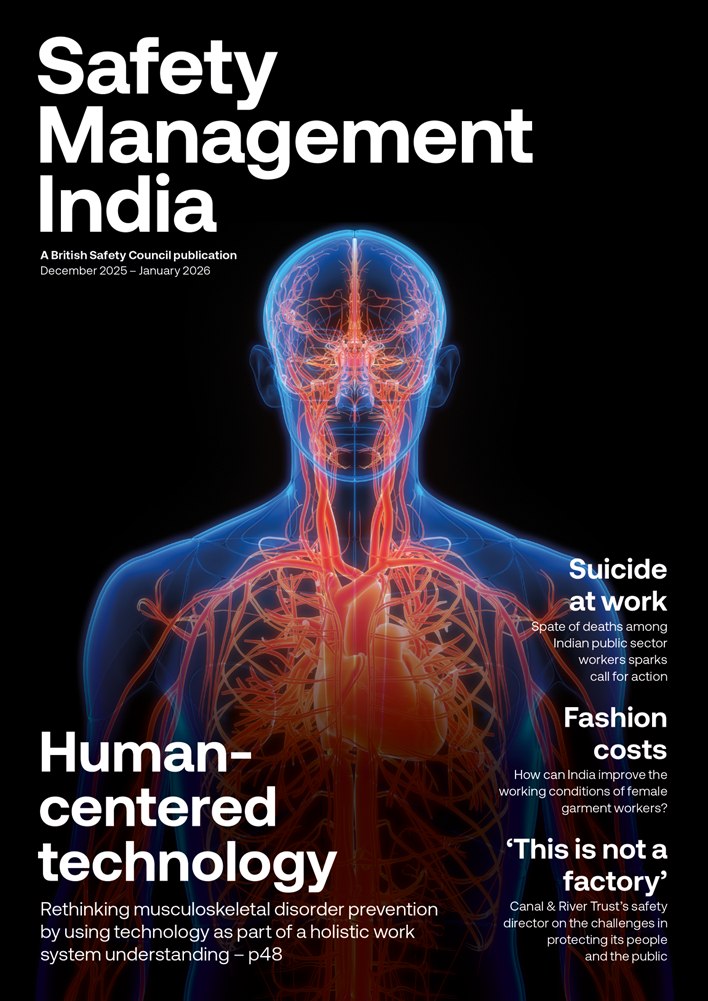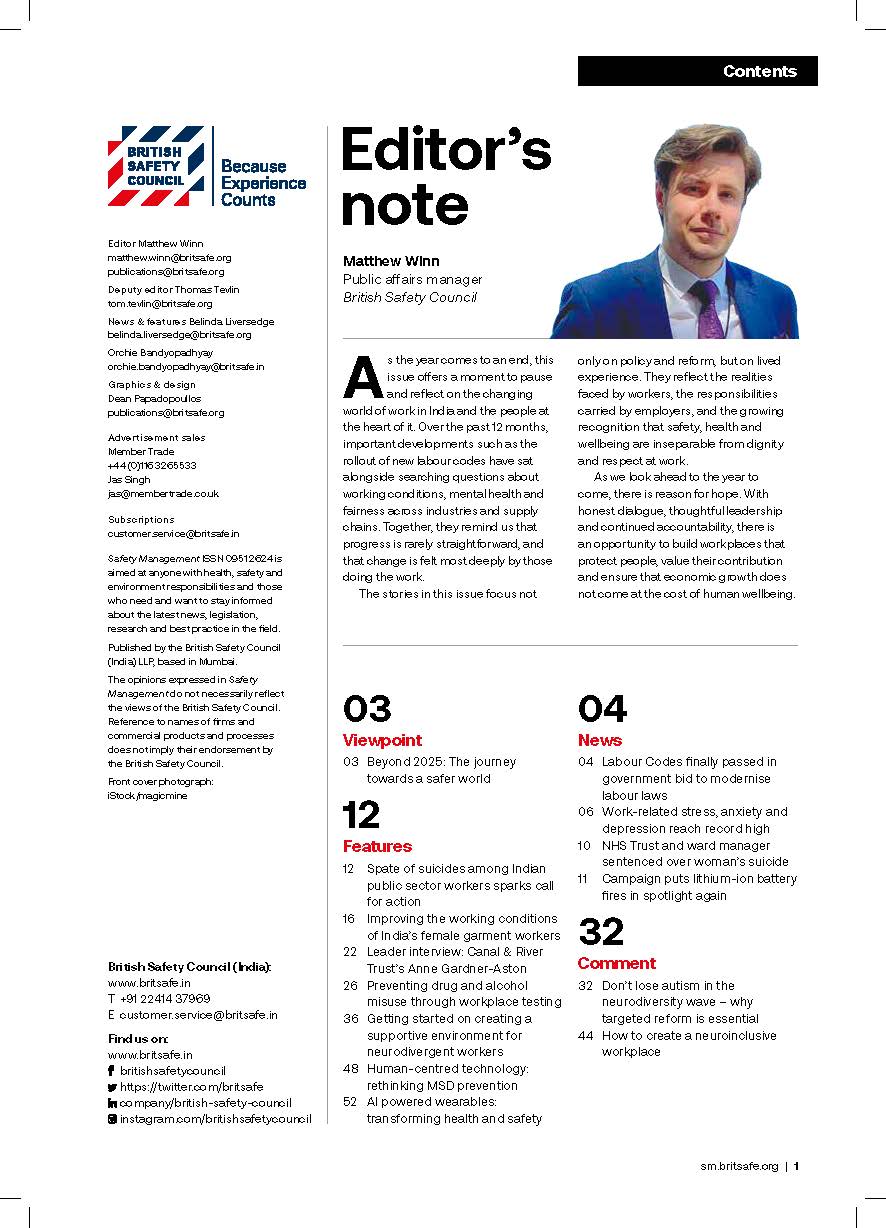With India predicted to face longer and more intensive heatwaves driven by climate change, experts say the country must begin planning how to better protect workers from the health impacts of searing heat and humidity.
Features
Too hot: how climate change is driving dangerous heatwaves in India
India is sweltering under a fierce heatwave as swathes of northern parts of the country have hit temperatures of up to 50 degrees Celsius. It is evident that heatwaves are becoming more frequent and severe in India, and this is the third year in a row of brutally high temperatures in April and May for the country.
Environmental experts warn that climate change is increasing the chances of these kinds of extreme weather conditions.
The Indian Meteorological Department (IMD) says the country is likely to experience longer and more intense heatwaves this year, warning that from April to June, 10 to 20 heatwave days are expected, as opposed to the normal four to eight days. Heatwaves are declared in India when temperatures exceed 45 degrees Celsius.
In the Delhi suburb of Mungeshpur, a record-breaking 52.3 degrees Celsius was recorded on 29 May, smashing the previous national record identified in the desert of Rajasthan by more than one degree Celsius. Rajasthan’s desert region of Phalodi holds India’s all-time heat record of 51 degrees Celsius, recorded in 2016.
However, Union Minister of Earth Sciences Kiren Rijiju said it was “very unlikely” that the temperature in Delhi had reached a record-breaking high, as reported by one of the city’s weather stations on 29 May.
In a post on the microblogging site X, formerly Twitter, Rijiju said senior officials from the weather bureau had been asked to verify the data from the Mungeshpur weather station.
“It is not official yet,” Rijiju said in his post on X. “Temperature of 52.3°C in Delhi is very unlikely. Our senior officials in IMD have been asked to verify the news report. The official position will be stated soon.”

Electricity demand
The extreme summer heat in Delhi pushed the city’s peak electrical power demand to an all-time high of 8,302 megawatts (MW) on 29 May, said officials from the city’s power distribution companies (DISCOMs), adding that power distribution companies had estimated the power demand to peak
at 8,200 MW this summer.
At the same time, the capital city is also facing an acute water shortage. The Arvind Kejriwal-led Delhi government recently called on the Central Government and Supreme Court to divert additional water supplies from Haryana, Uttar Pradesh and Himachal Pradesh for a month. In a petition to the Supreme Court, Delhi’s government said the need for water had increased in the national capital amid sweltering heat. “It is everyone’s responsibility to fulfil the needs of the country’s capital,” stated the petition.
Noting that in many areas of Delhi temperatures had soared nine degrees above those expected for this time of the year, the IMD issued a red alert health notice for the city, aimed at its estimated population of more than 30 million people.
The alert warned of a “very high likelihood of developing heat illness and heatstroke in all ages”, with “extreme care needed for vulnerable people”.
Unfortunately, amid the sizzling heat in the national capital, a 40-year-old labourer working at a pipeline fittings factory died of heatstroke. A native of Darbhanga in Bihar, the labourer was living in a room with no cooler or fan and was suffering from high fever.
According to doctors, the body temperature of the victim had crossed the 107 degrees Celsius mark, nearly 10 degrees above normal, when he was brought to Delhi’s Ram Manohar Lohia hospital by his roommate and other factory workers. This was the first heatstroke death reported in the national capital this summer season.
Devastating impact on human health
Extreme heat can have a devastating impact on human health, with heatstroke occurring when the human body is unable to control its temperature due to the failure of the sweating mechanism. Meanwhile, heat exhaustion occurs when the body overheats but continues to sweat.
According to medical professionals, the headache-inducing heat can pose serious health risks, leading to various heat-related illnesses, including heat exhaustion, heat stroke, heat cramps, heat rash and dehydration.
According to Gavi, the Vaccine Alliance, a public–private global health partnership that works to increase access to immunisation in poor countries, extreme heat can lead to severe dehydration. Gavi warns that if a person doesn’t drink sufficient water to replace fluids lost through perspiration and urination, the blood starts to thicken, increasing the risk of heart attack and stroke.
Speaking at the Haemophilia Conclave 2024, Dr Naresh Gupta, chair of the Haemophilia and Health Collective of North (HHCN), a body of healthcare professionals working in the domain of haemophilia care, said exposure to high temperatures can also exacerbate existing health problems. Referring specifically to patients with haemophilia, Gupta said such people require lifelong access to specialised centres and comprehensive care.
“The main challenge during extreme weather events for patients with haemophilia is access to specialised centres that provide comprehensive care,” explained Gupta. “Optimal care of such patients requires a comprehensive approach that is coordinated by a multi-disciplinary team of specialists and is provided at a dedicated haemophilia treatment centre. Extreme weather events limit this access.”
Dr Gupta added that climate change affects health outcomes for patients at healthcare establishments by disrupting the productivity and working conditions of healthcare staff. He warned that India’s healthcare system will be particularly affected by the failure to mitigate or adapt to climate change, as increased mortality, disease and injury will place greater demand on the healthcare system.
More resilient healthcare system
Health experts agree there is therefore an urgent need to make the healthcare system more resilient to the impacts of the climate crisis on human health and wellbeing.
Meanwhile, Judge Justice Anoop Kumar Dhand, sitting at the High Court in Rajasthan, highlighted the current and future risk of deaths due to heatwaves in India and stated that heatwaves should be declared a national calamity.
According to the Rajasthan government, to date, five people have died in the state due to the ongoing heatwave conditions.
According to a report in the Indian Express, Judge Dhand said both heatwaves and extreme cold conditions should be declared national disasters and advance preparations should be made to deal with them.
He ordered the Rajasthan state government to provide compensation to the dependents of people who have died due to this year’s heatwave, and directed the state authorities to take immediate and appropriate steps to implement the ‘Heat Action Plan’ prepared under the Rajasthan Climate Change Project.
Judge Dhand also asked the Rajasthan government to sprinkle water on the roads with high levels of public movement to reduce the heat, and provide cooling spaces, shade and drinking water at traffic lights. He also advised the state government to provide all possible facilities at health centres to treat people affected by the heatwave, and to issue an advisory note for all workers who work outside in the open, including porters and cart and rickshaw pullers, allowing them to rest between 12pm and 3 pm during extremely high temperatures.
Highlighting the importance of preserving the earth, Justice Anoop Dhand wrote at the beginning of his order: “Earth is the only planet which can sustain life on it. We do not have a planet B which we can move onto. Earth is home to millions of species including living and non-living,”
Sweltering conditions
At the same time, in the blistering summer heat, millions of voters battled sweltering conditions
to take part in India’s mammoth seven-phase general election.
The counting of votes took place on 4 June, and prime minister Narendra Modi secured another five-year term after winning a landslide general election victory.
In spite of record temperatures and voters complaining of heat stress, India’s election commission pushed ahead with polling. Throughout April and into May 2024, commentators and health experts raised concerns about the impact of high temperatures on voters, who were often forced to wait in long lines at polling stations. In fact, there were many instances of voters collapsing due to the deadly heatwave that hit parts of the country. In the southern state of Kerala in late April, five elderly people, including a polling agent, reportedly collapsed and died amid polling for the second phase of the election.
Ahead of the seventh and final round of voting, on 31 May, Bihar state government officials said in a span of 24 hours, 14 people, including 10 polling personnel, had died in the state due to heatstroke.
Candidates fainting, party supporters and workers falling ill and lower voter turnout made headlines as temperatures reached 45 degrees Celsius in parts of the country.
With hectic election campaigning under the baking sun being the norm for candidates, senior BJP leader and Minister of Road Transport and Highways Nitin Gadkari fainted and collapsed while addressing voters in Maharashtra’s Yavatmal district. After he was revived a few minutes later, Gadkari returned to the podium, and blamed the searing heat for the bout of unconsciousness.
In West Bengal where temperatures reached 47 degrees Celsius, a television news anchor blacked out on live television on 21 April, while reporting on the ongoing heatwave gripping the state.
The incident sparked concerns about the working conditions of journalists and the impact of extreme weather on media professionals, but may also have prompted Prime Minister Narendra Modi to urge journalists to drink more water.
After casting his vote for the Lok Sabha elections in Ahmedabad, PM Modi urged journalists covering the general elections to take care of their health as temperatures across the country are high. “I would urge you all to take care of your health, and as I always say, you must drink a lot of water.”
Abnormally high temperatures
The extreme heat in parts of eastern and southern India this April has been attributed to climate change. A new study by the World Weather Attribution (WWA), an academic group that examines the source of extreme heat, concluded that the abnormally high temperatures were made about 45 times more likely by climate change.
Scientists say temperatures are at least 2°C hotter in South Asia than in pre-industrial times because of climate change.
The recent heatwave in India is a “classic example” of how climate change is negatively impacting the lives and livelihoods of people, said Abinash Mohanty, sector head of climate change and sustainability at IPE-Global, an international development organisation, according to a news report from Germany’s Deutsche Welle (DW) television station, reproduced by The Hindu’s Frontline magazine.
India is projected to lose 5.8 per cent of working hours in 2030, a productivity loss equivalent to 34 million full-time jobs, due to global warming, the International Labour Organization (ILO) estimated in a 2019 report.
“India is going to lose 34 million jobs by 2030 only because of heat waves. Agricultural productivity is going to reduce. It will make a dent in food security, the supply cold chain and the economic sector,” Mohanty told DW.
“The time has come to strengthen local climate action across heat stress districts and cities” with strong government policies, Mohanty said. “The heat action (HAP) plans are a good start, but they need to be backed by policy and financial support to make India heat- wave-ready,” he added.
Impact on outdoor workers
With heat and humidity levels rising due to climate change, outdoor workers, including construction labourers, are among those worst affected. Working in the sun is taking a toll on their health and, as a consequence, their earnings.
During the summer, around 60 per cent of construction workers experience mild to severe heat-related symptoms, according to a survey by Ahmedabad’s Indian Institute of Public Health Gandhinagar. In addition, exposure to midday heat causes productivity losses of up to 20 minutes an hour in India, according to a study by North Carolina-based Duke University researchers.
Raja Mandal, a 28-year-old labourer at a construction site in Kolkata’s Rajarhaat area, said one of the biggest challenges facing construction workers during high temperatures was access to clean drinking water.
“Although I drink a lot of water, I still feel dehydrated,” he said. “I have seen my fellow workers fainting and getting dizzy while working under the direct sun at high heat exposure. Since we are contractual workers, we fall outside the ambit of formal protections.”
To minimise the impact of the extreme heat, Mandal keeps his head covered while working at the site. “It helps to an extent but it is difficult to work between 12 noon and 3 pm. I became sick and could not make it to work for seven days but I have to continue toiling in the sweltering heat to make ends meet, and provide for my wife and three children.”
More intense heatwaves
Experts have warned that India is likely to face more intense and frequent heatwaves in the future, affecting everything from people’s ability to work, power and water supplies and food production. For instance, demand for air conditioning (AC) and cooling systems rises during high temperatures, leading to increased electricity consumption, which can strain power grids, leading to blackouts, and aggravating the situation by leaving people without AC units.
Extreme heat can also damage infrastructure, such as roads and railways, affecting day-to-day life, commerce and crucial supply chains, and demand for water increases as people consume more fluids and more water is used to power cooling systems. This can strain public water supplies, leading to rationing and further placing people at risk of health problems like dehydration from the heat and humidity.
Jeopardising economic productivity
In fact, a 2022 report from the World Bank, Climate Investment Opportunities in India's Cooling Sector, warned that rising heat across India would potentially jeopardise economic productivity. “Up to 75 per cent of India’s workforce, or 380 million people, depend on heat-exposed labour, at times working in potentially life-threatening temperatures… by 2030, India may account for 34 million of the projected 80 million global job losses from heat stress associated productivity decline,” it stated.
The report also warned that India will be one of the first countries to experience heatwaves that will break the human survivability limit. “The G20 Climate Risk Atlas also warned in 2021 that heatwaves across India were likely to last 25 times longer by 2036-65 if carbon emissions remain high, as in the IPCC's worst-case emission scenario,” the report said.
Experts say that preventive measures that could be incorporated into public health policies include restricting work during the hottest hours, taking rest breaks, ensuring proper hydration and wearing appropriate work clothes.
Roxy Mathew Koll, a climate scientist at the Indian Institute of Tropical Meteorology, told DW: “India needs a long-term vision where we have policies that help us in managing our work hours, public infrastructure, schools, hospitals, workplaces, houses, transportation, and agriculture to cope with the future heatwaves.”
FEATURES

The price of fast fashion is not pretty
By Orchie Bandyopadhyay on 11 December 2025
The largely female workforce in India’s garment manufacturing industry faces long hours, low wages and poor working conditions, and campaigners say it is time the Indian government and international clothing brands took tougher action to improve working conditions, pay and employment rights.

Suicide at work: a major problem in India
By Orchie Bandyopadhyay on 11 December 2025
Recent reports of suicides among workers ranging from police officers to electoral roll officials have prompted calls for employers and government agencies to do more to both reduce excessive workloads and provide better mental health support at work.



